Intel
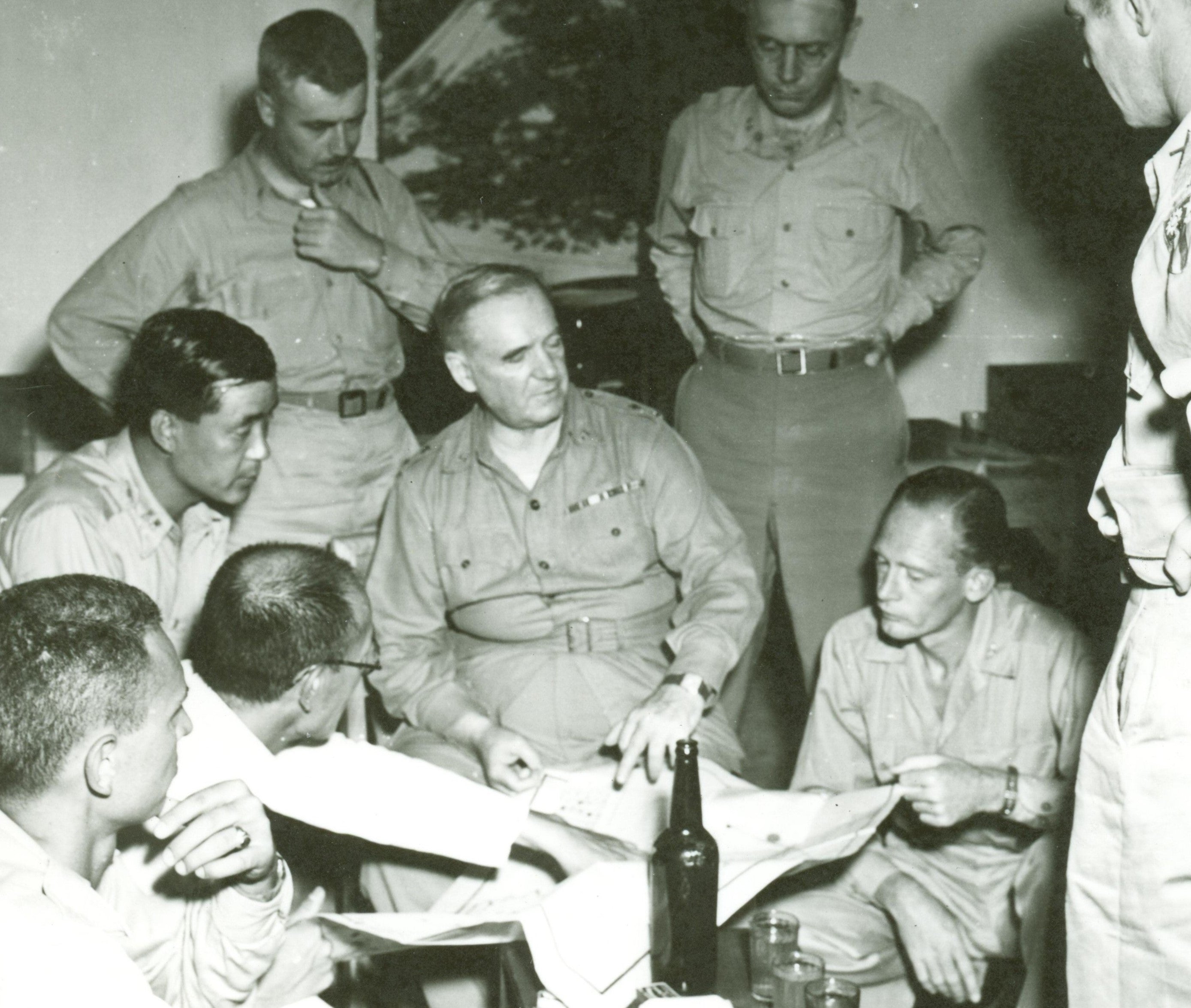
Glorious Amateurs: The Watch Worn by the OSS and SOE
Readers of thrillers set in World War II and even some non-fiction histories of the OSS and SOE could easily assume the kit of these...
Read OnReaders of thrillers set in World War II and even some non-fiction histories of the OSS and SOE could easily assume the kit of these “special forces” operators was highly specialized and the result of great care and curation in OSS and SOE headquarters. The reality was that early in the war, this kit was as much ad hoc as it was highly curated.
Read On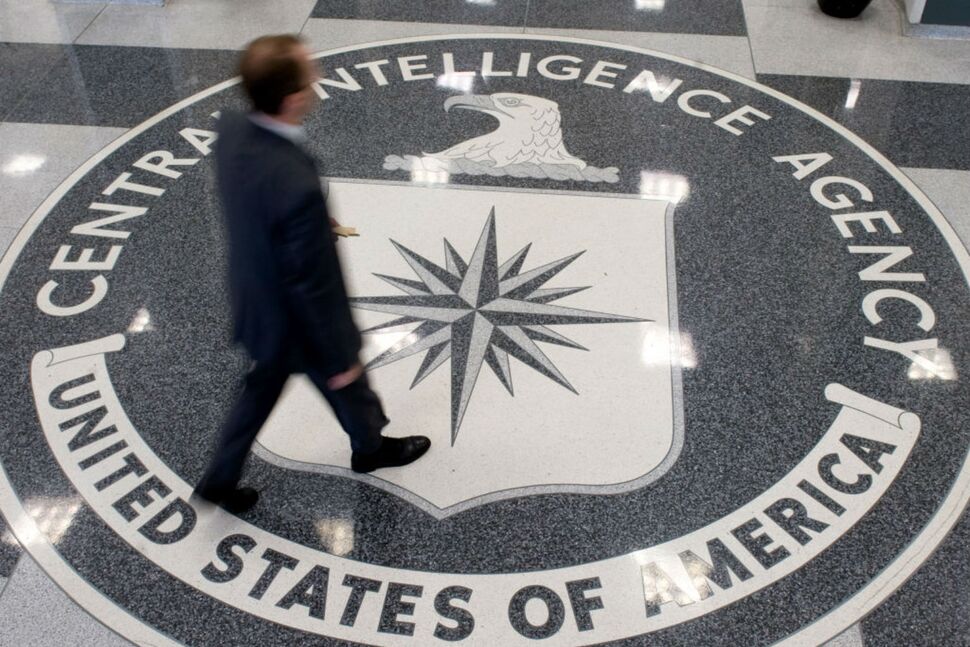
CIA Analysis of Foreign Leaders’ Timepieces
A foreign leader's timepiece can play a part in informing the profile and psychological assessment of the given leader, and when it comes to analysis, just having...
Read OnA foreign leader's timepiece can play a part in informing the profile and psychological assessment of the given leader, and when it comes to analysis, just having a piece of the puzzle helps – a watch might be significant or might not be.
Read On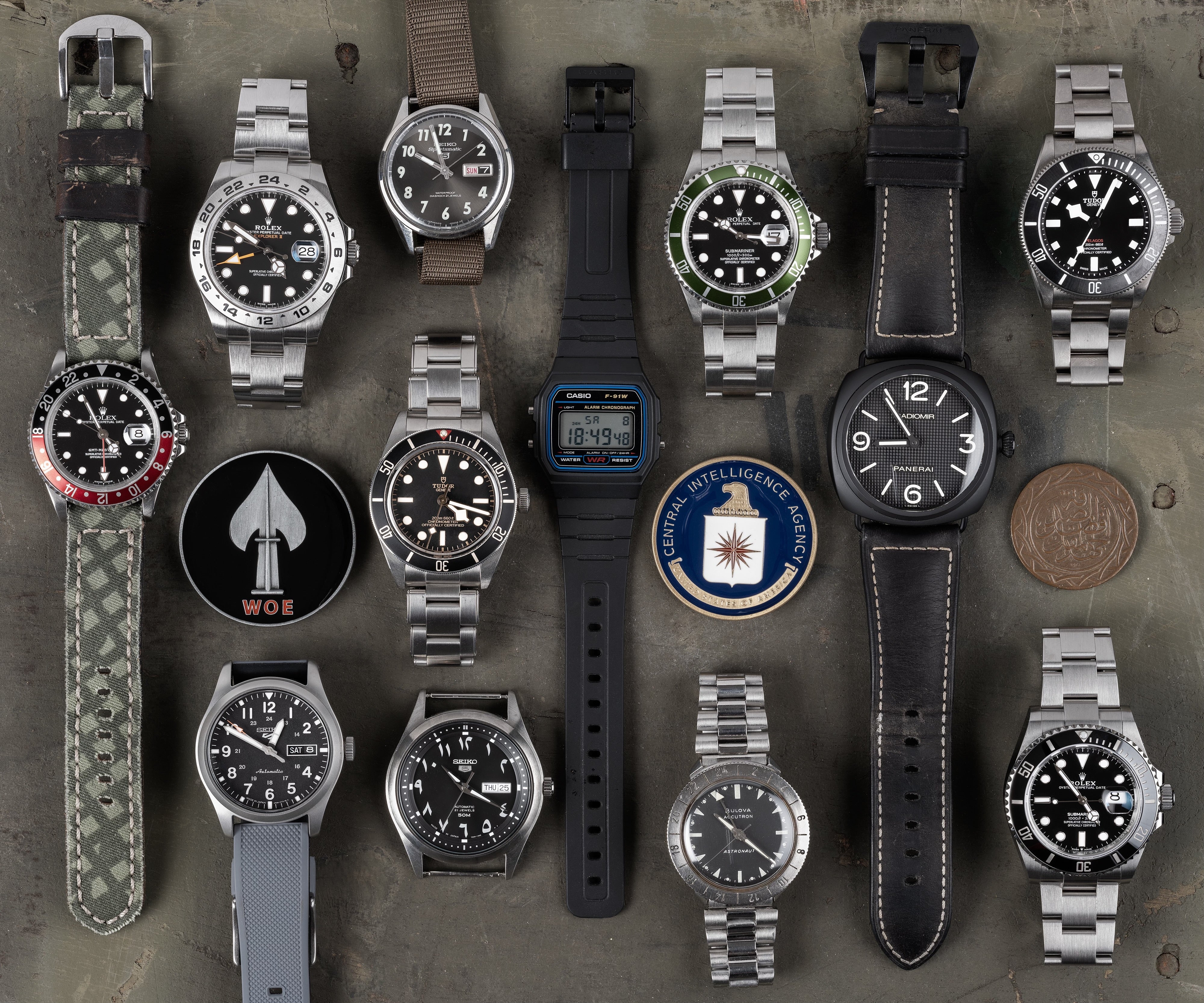
Ask Watches of Espionage Anything, Part I
In this edition of the Dispatch, we address some common questions we get about W.O.E with an in-depth response. Many of these responses can even...
Read OnIn this edition of the Dispatch, we address some common questions we get about W.O.E with an in-depth response. Many of these responses can even serve as standalone stories– and probably will at some point, but for now, here’s some additional insight on Watches of Espionage. READ PART II HERE What’s a good entry-level watch? What’s a good watch under $1,000? This is the most common question we get, and we love this question because it suggests that the W.O.E. platform is opening up people to the world of mechanical watches, something that we are clearly passionate about. If your takeaway from W.O.E. is that you need a Rolex to be a cool guy, you’re missing the point. We believe the man makes the watch, not the other way around. A badass wearing a Hublot is still a badass, just as a dweeb wearing a Rolex MilSub is still just a dweeb. It’s about who you are, not the watch you’re wearing. Read: Best Watches Under $1,000 - Ask The Experts (Photo Credit: James Rupley) There are plenty of great watches under $1,000 and other publications have compiled lists that feature both established manufacturers and micro-brands alike that offer serious value. That said, our answer to this question is simple: Seiko. If you like “Watches of Espionage” then you will love this brand. When it comes to tools actually used in the field, you’re likely to find a Seiko on a professional’s wrist. Seiko, after all, is the “Toyota of watches”– they’re cheap and reliable utilitarian tools. For the same reasons Toyotas are a common sight in modern conflict zones, Seikos have adorned the wrists of hard men in hard places for decades. If you’re looking at dipping your toe in the proverbial pool of mechanical watches, this is a great place to start, and even end. Arabic Dial Seiko (Photo Credit: James Rupley) The follow-up question is always, "which model?" We hesitate to provide an answer to this because it’s a deeply personal choice. You can scroll through our collection and others and see where we have landed, but it’s best to take some time and look through the website to see what speaks to you and what’s within your budget. The best way to land on the right reference is to find a Seiko dealer near you, try some on, and ask questions. You can get an entry-level Seiko for well under $300 and I cherish mine just as much as I do my most expensive Rolex. Unfortunately, one of the downsides to Seiko is that the bracelets are the weak point. They have a specific “jangle” and can feel like they’re of much lesser quality than that watch they’re attached to. So use some of that leftover coin to buy a few straps and change them out frequently to figure out what you like. All the W.O.E. products are designed to be worn/used with a Seiko or a Rolex. We will do a follow-on Dispatch at some point with some tips on buying watches with value in mind. What advice do you have for someone looking to join the CIA? The second most common question we get is, "How do I join the CIA?" While the purpose of this platform isn’t to inspire the next generation of public servants, we are quickly learning this is a byproduct of W.O.E., which is great. If you want to join the CIA, don't message someone anonymously claiming to be former CIA. Keep this goal private and practice discretion. The Agency values discretion, hence the label of a quiet professional. Here are a few pieces of advice for those interested in the operational side of the house. Become a master of a trade. CIA hires former teachers, investment bankers, plumbers, businessmen, SpecOps, doctors, lawyers, and even professional athletes. Become unique and accomplished. Have a compelling story that will interest the CIA recruiter. You can apply right out of college, but your chances of being accepted and thriving at the Agency will greatly increase if you have unique work/life experience. Travel. Live, work and study abroad. The one common trait of 99% of CIA Case Officers is that they have significant prior overseas experience. Your job is to understand geopolitics and empathize with individuals different from you. This can only truly be learned and demonstrated through experience. Even if you aren't interested in joining the CIA, we still think we would all be better off if we travel and experience different cultures. Learn a language. Any language is advantageous, but the harder the better. Russian, Mandarin, Persian/Farsi, Korean etc. Turn on the news and see where the current/future conflicts are. The languages spoken in that area are generally of high interest and will make a CIA recruiter happy. Keep your nose clean. You don't have to be a saint (I saw the inside of a jail cell a couple times growing up and made more than a few bad decisions). But if you do drugs, stop. Don't drink and drive. Pay your taxes. Don't commit felonies. This is all good advice for joining the CIA, but even better advice for life. READ. This one is important. Read every book/article on the intelligence business you can find. This will help you figure out if it is right for you and where your interests are aligned. The current generation has a wealth of information at their fingertips on the Intelligence Community, including on the CIA’s own website. Take advantage of this information and do your research. If you are a foreigner, find an unattributable internet portal and google "CIA walk in." Lastly, a career as a Case Officer is more than just a job, it’s a calling and a way of life. You have to be all in and cannot treat it like a 9-to-5. CIA is not perfect, but I loved my time working in the building and in the field. It is not always an easy lifestyle and comes with unique challenges, but it is a great opportunity to serve your country, see the world and live a life worth living. Happy hunting. What watch did you wear most operationally? In my initial Hodinkee article, “The Connection Between Watches and Espionage,” which was in many ways W.O.E.’s debut to the larger watch community, I wrote about wearing my titanium Panerai Luminor Marina 8 Day during a military coup in Africa. The opening story was a relatively mundane night, no heroic activities, just a standard night as a Case Officer operating in Africa. The only reason I even remember that watch that night was that it was relatively new, and the luminous numbers stuck out. In fact, I could have written that story about countless nights wearing several watches. W.O.E.’s personal IWC Mark XVII and Africa Division challenge coin. (Photo Credit: James Rupley) But, looking back at pictures of the years I was at CIA, the most common watch on my wrist appeared to be an IWC Mark XVII. It is a great and versatile watch that can fit in with a suit and tie at a diplomatic function in Europe or jeans and a dirty t-shirt in the African bush. It is also not overly flashy and would not draw undue attention. W.O.E.'s IWC with W.O.E. DNC strap prototype (Photo Credit: Michael Shaffer / @capitolsunset) Truth is, I did not put much thought into my watch while overseas; it was a tool I used regularly. This IWC has three letters engraved on the back, only one of which is one of my initials. The engraving caused some problems during a training exercise and then when I was (REDACTED) pulled into secondary for additional “screening” (interrogation). Fortunately, I had come up with a cover story for the three letters as the initials of a fictitious father prior to the training exercise and it was not a significant issue. It was a good lesson and reminder that the smallest details matter in the world of espionage. W.O.E.'s Breitling Aerospace (Photo Credit: Tom Brenner) A close second was the Breitling Aerospace that I received as a gift from King Abdullah of Jordan. This is an entirely practical watch given the digital feature set. The digital timer was particularly useful and was used to log activities during surveillance operations in African capitals, time debriefings of ISIS members, and to record legs of Surveillance Detection Runs. How do Case Officers, Special Operations personnel, etc. afford a Rolex? First, not every HUMINT collector or military “operator” wears a mechanical timepiece, let alone a luxury watch like Rolex, Breitling or Tudor. It is easy to get this impression given the content at W.O.E., as there is a clear selection bias for the stories we tell. While this was largely true in the mid-20th century when many of these watches were issued and/or easily purchased at the local PX, today the vast majority of "operators” rely on cheap and effective digital tool watches. That said, there is a strong watch culture in both the military and intelligence circles, and the percentage of individuals that have mechanical and even luxury “tool watches” likely exceeds that of the civilian counterparts of the same socioeconomic status. The reason for this is just as much (if not more) culture than anything else. (Photo Credit: James Rupley) Second, not all mechanical or even luxury timepieces cost $10,000. As discussed above, quality Seiko tool watches can be purchased for well under $1,000 and brands like Breitling, Panerai, IWC, Tudor and many others can be acquired second-hand for a fraction of the inflated prices of Rolex. So how do we afford them? The short answer is, the same as everyone else. Contrary to many Hollywood representations of CIA officers, the majority of Case Officers I worked with did not come from elite Ivy League backgrounds or wealthy families. They work hard and save up. If you have spent the last 10-20 years in an operational capacity, you have likely spent several years deployed to a conflict or other hardship post and the government has compensated you (relatively) appropriately. While you will not become rich from this calling, you will likely have earned enough disposable income and it can be used at your discretion to fund your hobbies and interests. Many choose to use some of the funds to purchase a watch. (Photo Credit: James Rupley) One example of this is the “war zone watch.” While a government salary does not support an extensive watch collection, when officers deploy to war zones for an extended period, their pay can almost double while their personal expenses are minimized. After returning from Iraq, Afghanistan, or one of the undeclared expeditionary locations, many officers take a portion of their savings and purchase a watch to discreetly commemorate the accomplishment. Further, as much as we all can’t stand the black box of who gets priority on the Authorized Dealers (AD) “waiting list”, the stores and sometimes even individual sales associates have significant leeway with whom they prioritize as customers. Some ADs in Northern Virginia and metropolitan areas near large military bases prioritize clientele from military and government agencies. Why are you anonymous? I get the impression that a lot of people think the main reason behind W.O.E. being anonymous is because of OPSEC (operational security). In reality, when I left CIA, I requested that my association with the Agency be declassified. This was approved with certain stipulations/restrictions. W.O.E.’s hands busy influencing. (Photo Credit: James Rupley) The real reason “W.O.E.” is anonymous is twofold. First, “Watches of Espionage” is not about one person, it’s about our entire community. “W.O.E.” is the curator or the “guide” on this journey, but it’s not just about me. I insert some of my own experiences and stories for context or to demonstrate a point but that’s it–it’s strictly to add additional information. In fact, if you read the articles where my personal experiences are mentioned, I am not the hero; they’re relatively mundane experiences of a CIA Case Officer. Secondly, I value my privacy. I don’t want to be famous or an internet celebrity in either the watch or tactical community. That’s just not for me. Additionally, being anonymous ironically allows me to be more authentic in my presentation of my watch collection and love of timepieces. Posting expensive watches on social media can often accurately be interpreted as a “flex” or show-off and can quickly fall into “cringe” territory. Being anonymous allows me to show whatever I want without any of the added recognition. What watch would you recommend for a woman in the field? “W.O.E. Mansplains What Watches Women Should Wear” is what I would call this article. Truth is, I am not qualified to really comment on this topic. Check out Brynn Wallner who runs a platform called Dimepiece Co. if you are a woman interested in getting into watches. She does a great job curating content specifically for women and is a disruptor in this industry. Homeland, not an accurate portrayal of female Case Officers (Photo Credit: HBO, Homeland) Traditionally there have been men’s and women's watches. To simplify a complicated topic, men’s watches are generally larger and women’s smaller. Recently there has been a movement to remove gender from watches and make them all unisex. While we won’t take a position on this hyper-sensitive debate, we will say that there is no reason a woman couldn’t and shouldn’t wear a traditional men’s timepiece. Mrs. W.O.E.'s current go-to timepiece is a Tudor Black Bay 58, one that many may say is a traditional men’s watch. Likewise, some men appreciate and even prefer smaller timepieces that some may perceive as women’s watches. More power to you. Wear whatever you want. What is your grail watch? A “grail watch” is the ultimate watch for a collector, something that they would never sell if they were able to acquire it. Like the “holy grail”, this watch is often unattainable, or incredibly unlikely to obtain. It is more of a fantasy than a realistic goal. Photo Credit: Tudor Collector, Ross Povey W.O.E.’s grail is a military-issued Tudor Submariner, specifically a South African military-issued Tudor Sub from the 1970s. While I have no affinity for the South African Defence Force (especially from that time frame), I have spent much of my life living and working on the continent and would find the connection meaningful. Pictured above is one of the few known watches, a 1974 South African Navy Issued Black Tudor Submariner 7016. I want to do a full deep dive Dispatch article on this, if nothing else to build my knowledge base. Why do you not have a G-Shock in your collection? The Casio G-Shock is a great watch and if you are in a tactical or operational position, it’s hard to beat as a tool watch. For deployed paramilitary officers or uniformed military personnel conducting direct action and kicking in doors it is a fantastic tool. The same for Garmin, Suunto, Timex and the plethora of other digital pieces. There are some downsides, most notably the requirement for a battery, but they are cheap and relatively indestructible. Additionally, G-Shocks also have a cult following in the watch community and there are many collectible references and collaborations. So why doesn’t W.O.E. have one in the toolbox? While it is ideal for military personnel, the Casio G-Shock is a clear “tell” for Americans to wear overseas. For Case Officers, who mostly operate in capital cities while under cover (i.e. posing as something they aren’t) this watch can make one stick out as much as a gold Rolex Daytona. A decade ago I was posted overseas in a major African capital. The conflicts in Iraq and Afghanistan were dying down, but the “Global War on Terror” was still in full swing and a priority for the USG. Department of Defense personnel had flooded into Africa to conduct overt military assistance to host country nations. One night I was out for drinks with an early local contact at a high-end hotel when a group of civilian-clothed USMIL personnel walked in. Tactical? (Photo Credit: Casio) My contact, who was not yet aware of my Agency affiliation, eyed the group as they took their seats at the bar and proudly said, “There are some of your spies, you can always spot American spies, they have beards and wear large plastic watches on the inside of their wrists.” I don’t remember what watch I was wearing that night, but I do know it wasn’t a large black tactical watch. It would have been something that supported my cover as an American (REDACTED). Navy SEALs conducting VBSS while wearing G-Shock, likely DW-6600 (Photo Credit: US Navy) We have detailed the role digital watches play in espionage and regardless of one’s horological interests or occupation, a cheap and reliable digital timepiece is a must in any collection. My go-to is a Timex Ironman, which I use for PT and other water activities when I want to record specific times. Would you wear another unit’s unit watch? Does this qualify as stolen Valor? We have written extensively about unit watches and there are some cool references like the SAS Explorer II that sometimes show up for sale or auction. While it is unfortunate that some operators choose to part with these meaningful timepieces, we also understand that life circumstances change, and the astronomical secondary market can become irresistible. Special Air Service Rolex Explorer II Ref. 216570 (Photo Credit: Sotheby’s) Short answer is yes, I would wear another unit’s watch and I do not view this as stolen valor. For example, if someone gave me the SAS Rolex Explorer II (I couldn’t afford or want to spend the asking price), I would wear it. In fact, the watch ending up with a true collector who appreciates the history and meaning behind a unit watch is probably a good thing. The caveat to all of this is that it all comes down to intention: if someone uses the watch to attempt to convince someone that they served in a specific unit when they did not, of course that is taboo. But there are far easier and more effective forms of stolen valor than spending a small fortune on a collectable timepiece. What are your opinions on smart watches? This is a fascinating topic and something I will dive into deeper in a future Dispatch, a lot to unpack here. First, in general we are not against smart watches, in my post-government life I have worked in emerging technology and the benefits of “wearables” including smart watches are immense. Even though they are contrary to much of what we put out at W.O.E., smart watches are great tools, providing immediate and actionable data to increase your health, productivity, and situational awareness. Apple Watch (Photo Credit: Apple) That said, for people in the business of espionage, smart watches and the internet of things (IoT) have profound counterintelligence implications and are not ideal. For one, wireless devices are not permitted in SCIFs (sensitive compartmented information facility) so they are not even an option for most while at work. Secondly, as previously documented, smart devices are certainly not a spy’s best friend. When wading through a Middle Eastern souk trying to detect and avoid hostile intelligence services, wearing a beacon with a microphone that tracks your every move, on your wrist or in your pocket, simply is not acceptable. Secret Australian government installation on the Strava heat map showing routes of staff movements logged in the app. (Photo Credit: Daily Mail / Strava) In late-2017, open-source fitness tracker data was used to reveal the location of sensitive military locations in countries including Syria, Niger, and Afghanistan. A reliable timepiece is a necessity to ensure you conduct your operational act (agent meeting) at the exact time and place without leaving behind a digital footprint that can be pieced together by a competent hostile intelligence service. Sometimes it’s best to do things the old-fashioned way. Again, this is a great topic and something we will flesh this out in more detail in a future Dispatch. Read More: CIA Officers And Apple Watches What is a modern MACV-SOG Seiko? As documented in the Dispatch: Vietnam MACV-SOG Seikos: Setting The Record Straight, “SOG Seikos” are one of the greatest historical examples of “Watches of Espionage.” They are procured using black budget funds and issued to SOG operators as sterile and untraceable equipment. Seiko’s cult-like following combined with military historians’ fascination with SOG has made the MACV-SOG Seikos incredibly collectable (i.e. expensive). While the prices of the MACV-SOG Seikos have recently skyrocketed to well over $1,000 if you can even find them, for those interested in purchasing a modern version, the SNK381K1 is as close as it gets. At 37mm, it is smaller than most modern watches, but throw it on a green nylon strap, add a tactical compass, and you can play the part. W.O.E.’s personal modern MACV-SOG, Seiko SNK381K1 If you really want to signal to others that you are a tactical watch bro, wear it on the inside of your wrist like John Stryker Meyer did in Vietnam. Like most Seikos, it is relatively affordable and you should be sub-$200 all in. Pretty cool watch. Do you plan to restock straps, cases etc? Yes, all of our products are hand made in the US/UK so they take time and cannot be mass produced. We are working on some unique and innovative things for 2023 and will announce them in the newsletter. We should have a large release of W.O.E. Travel Pouches in late January/early February and we are really excited about the leather straps later in February. The next release of the W.O.E. Z.A. Straps is TBD. Sign up for “Notify Me When Available” for anything that interests you. (HINT-HINT) More to come! Thanks for the support. Read Next: The Connection Between Watches And Espionage This Dispatch has been reviewed by the CIA’s Prepublication Classification Review Board to prevent the disclosure of classified information.
Read On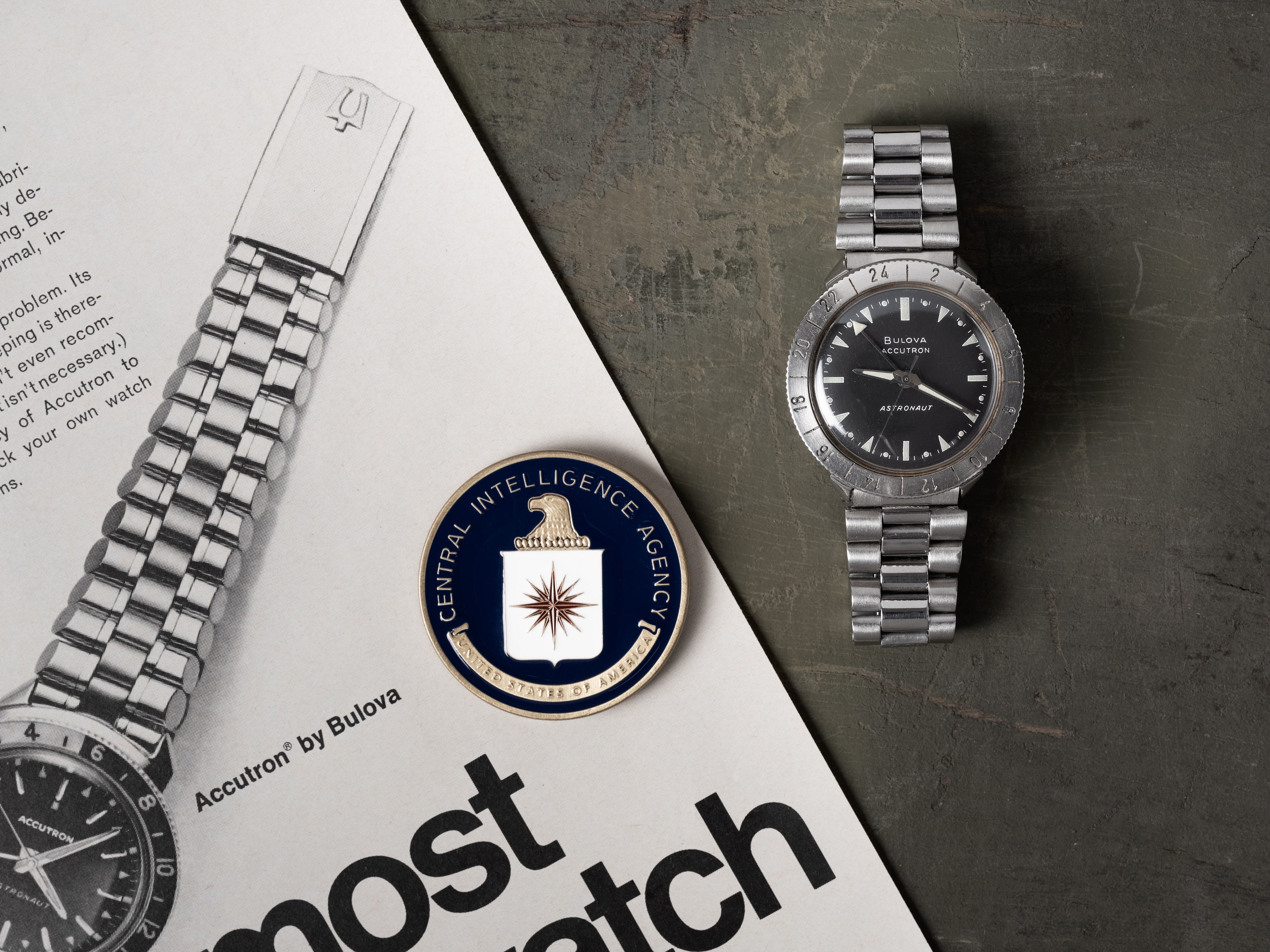
The Lasting Legacy of the CIA’s Lockheed A-12 and the Watch That Served It
In 1957 Clarence “Kelly” Johnson, the leader of aircraft manufacturer Lockheed’s Advanced Development program dubbed Skunk Works, knew satellites would make reconnaissance aircraft obsolete in...
Read OnIn 1957 Clarence “Kelly” Johnson, the leader of aircraft manufacturer Lockheed’s Advanced Development program dubbed Skunk Works, knew satellites would make reconnaissance aircraft obsolete in the near future. It was determined that the U-2 spy plane, which Johnson had worked on, had a radar cross section that was simply too large to operate completely undetected. Three years later one flown by pilot Gary Powers would be shot down in Soviet Airspace and he would be captured and charged with espionage. The price of human life was simply too high to pay, and with the Cold War in full swing, US intelligence-gathering operations were necessary to keep an edge over the nuclear-capable Soviets. This meant that significant investments were being made in satellite technology to solve these problems, but the technology wasn’t quite where it needed to be just yet. That day would come, but the impending obsolescence of aircraft built for reconnaissance didn’t stop Johnson from spearheading one last effort: Project Oxcart. Richard Bissell was the CIA officer responsible for facilitating the successor to the U-2. He oversaw Project Gusto, which was a committee set up to explore all possible solutions to the dynamic need for a next-generation aerial reconnaissance platform. Lockheed’s submission won out over Convair’s designs derived from the B-58 Hustler, and the A-12 project was funded and kicked off. The A-12 had its maiden flight on April 25th, 1962, and subsequently carried out 2,850 test flights before its first official mission on May 31st, 1967. Ironically, the A-12 never carried out any overflights of the Soviet Union or Cuba, which is exactly what it was intended for. The CIA found another use for the plane: to spy on North Vietnam. Departing from Kadena Air Base in Japan, the A-12 performed 22 sorties gathering intelligence on the movements of North Vietnamese forces. The project wasn’t all for naught, however. The development of the A-12 led to the creation of the SR-71, the often-celebrated and easily recognizable icon that’s wrongly dubbed “the fastest airplane ever to have graced our skies” even though that honor officially belongs to the A-12 at just over Mach 3.3. While the A-12 was born and died in secrecy being owned and operated by the CIA, the SR-71 was the product of the USAF. Both carried out surveillance overflights, but the SR-71 was fit for a wider range of missions, not to mention a two-seat configuration for a reconnaissance officer. The plane featured a modular system in the nose-mounted equipment bay that allowed for ELINT and SLR data to be collected. ELINT is electronic intelligence, while SLR is side-looking radar, and the added benefit of gathering additional intelligence meant that the SR-71 had a much longer service life and participated in just about every single conflict up until 1989, until they were retired. The A-12 on display at CIA Headquarters — number eight in production of the 15 A-12s built — was the first of the operational fleet to be certified for Mach 3. No piloted operational jet aircraft has ever flown faster or higher. (Photo Credit: CIA) And that’s why it has become perhaps the most prominent military aircraft ever produced. It’s become a symbol for superlative, next-generation technology and a very specific can-do attitude of the mid-century era that simply doesn’t exist anymore. Budgets be damned, the Blackbird was going to be the most capable airplane ever. And it was. It’s a flying superlative. However, the watch that’s most typically associated with the A-12 is anything but iconic, instead it’s been relegated to enjoyment by a very niche community of die-hards. Although what it lacks in popularity it more than makes up for in technical prowess. The Bulova Astronaut was a perfect horological fit for the A-12; both platforms were so far ahead of their time that neither of the core technologies they introduced stuck around long after they were gone. The Astronaut used the Accutron tuning fork movement, which predated quartz and proved to be accurate to one second a month. It didn’t have a balance assembly (or mainspring), instead it used a tuning fork oscillator that vibrated at 360hz. If we think in terms of a “propulsion system,” the tuning fork movement was congruent to the SR-71’s J58 engine that pioneered a system that essentially turned it from a standard jet engine at lower speed to a ramjet engine above Mach 2. Bulova Accutron Astronaut, late 1960s (W.O.E.s Personal Collection) Both the tuning fork mechanism and the J58 were engineering marvels that excelled at capturing and controlling energy and bending it to humankind’s will. The Bulova Accutron Astronaut even emits a high-pitch whine that’s straight out of a sci-fi movie. The advantage of the tuning fork movement for an A-12 pilot is that there isn’t a balance spring that G forces would be able to affect, and in an airplane that can go over Mach 3, G forces are a crucial concern for a mechanical watch. Accutron movements proved effective and reliable for most of NASA’s cockpit instrumentation in the Gemini rockets, and later, the Apollo program. The CIA supplied the A-12 pilots with the Bulova and when the program ended, the watches stayed with the pilots. Vintage Watch Advertisement, 1969 (W.O.E.s Personal Collection) In typical CIA fashion, the Agency cared nothing about the absolute technical and engineering achievement of both the A-12 and the Bulova Astronaut. They were tools to get the mission done. If there was a cheaper or more effective tool available to execute the mission, those would be chosen, and eventually, they were. Quartz watches replaced the tuning fork movement, and more conventional propulsion systems were favored over the complex retracting inlet cone system that allowed Mach 3+ flight on the Blackbird. The existence and disappearance of both these technical marvels serves as a reminder that no matter how much we romanticize or idolize incredible technology, it’s all in service of a larger mission: Giving America a competitive advantage when it comes to national security. The rest is just an added bonus. Read Next: Man O'War And The Horological Symbols That Inspire Us
Read On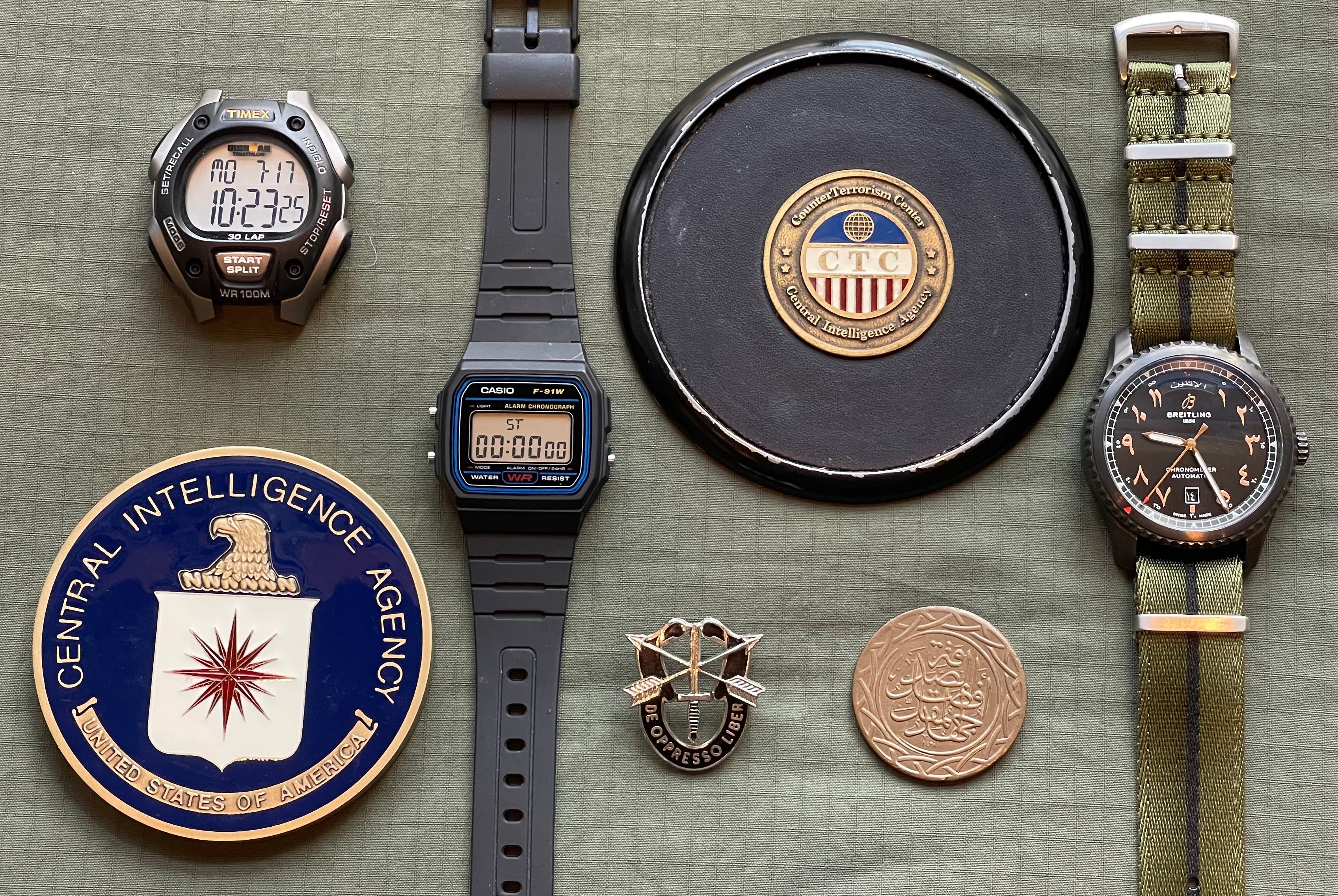
Digital Watches of Espionage, The Role Watches Played in the Early Days of the CIA's War in Afghanistan
by J.R. Seeger For this week’s Dispatch, former senior CIA Case Officer J.R. Seeger writes about the role his watches played in the early days...
Read Onby J.R. Seeger For this week’s Dispatch, former senior CIA Case Officer J.R. Seeger writes about the role his watches played in the early days of the conflict in Afghanistan. As Seeger outlines, watches are tools, and one should choose the best tool for the job. In the world of espionage, the tool is not always a Rolex. We often worry that W.O.E. gives the perception that every Case Officer, Navy SEAL or Special Forces operator is running around the world with a luxury timepiece on their wrist. While that is largely the focus of this platform, the truth is many of the best practitioners rely on digital tools to accomplish their task. Sometimes cheap, reliable digital watches are the best tools for espionage. Digital Watches of Espionage - The Role Watches Played in the Early Days of the CIA’s War in Afghanistan October 2001: I was the team leader on one of the first CIA teams into Afghanistan. Other, more articulate writers have related the story of our team and work with US Special Forces. 12 Strong by Doug Stanton and First Casualty by Toby Harnden are detailed accounts of the Fall of 2001. Instead, this is a short essay about the watches I wore during that deployment behind the Taliban lines in the Fall of 2001. For most of my deployments in the 1990s, I wore either a Timex Ironman or a Casio G-shock. My watch choice was based on two requirements: accurate timekeeping and low cost. During travels in the Middle East, South Asia, and Central Asia, the idea of wearing something other than an expendable watch was out of the question. Plus, my only “good” watch, a 1971 Bulova Deep Sea Chronograph, was engraved with my initials, not always something you want on your wrist when you might be someone else. CIA’s Team Alpha Prior to Insertion into Afghanistan. Seeger Back Row, Third From Left As the team headed to our intermediate stop in Uzbekistan, our level of kit was minimal. I often say our team picture (above) looks like eight bikers with Kalashnikovs. Jeans, work shirts, boots and fleece jackets, weapons, radios and money. Everything you would need for a successful trip into a war-zone. During my pack-out, I didn’t pay any attention to the watch on my wrist. Of course, I should have realized that I was probably pushing the envelope on the battery in my Timex, but I had a couple of other things to worry about as we designed a campaign plan for five provinces in Afghanistan. As we completed our final briefings in isolation at Karshi Khanabad Airbase (aka KKUZ), I realized my watch had quit. No warning. Just a blank screen. Less than ideal when precision is required. Casio F-91W, w/ AKS-74U (Photo Credit James Rupley) One of my teammates laughed and said, “Boss, you forgot that two is one and one is none.” He reached into his ruck and pulled out a Casio F-91W. Probably the least expensive piece of kit in all our inventory. He tossed it to me, and it went on my wrist. A cheap watch is better than no watch at all! We loaded into MH-60 helicopters in the early morning of 16 October for our insertion. That’s a story that has nothing to do with watches. Lessons: - two is one and one is none- you may never know when a piece of kit is going to be essential Tool Watches as Operational Gifts to Afghan Warlords In November 2001, we were in a consolidation phase of the effort to defeat the Taliban. By this time, we had consolidated the two teams, Alpha and Bravo and had a full complement of eleven to handle the region. We often split into buddy teams to travel with our Afghan and Army Special Forces colleagues, hunting Taliban and building tribal alliances. Early in November, in one of our parachute resupplies, I received a Suunto watch - an early version of the Suunto tool watch series. Someone on the team decided I needed a better watch and put in the request. The early Suunto watches were large plastic timepieces that served as a compass, thermometer, and barometer as well as the standard multiple time zones display, timers and alarms. It was a bit more of a commando watch than I thought I needed, but I was certainly ready to use it. It was big and regularly got caught on rucksack straps as we loaded on horseback and/or trucks. Still, it was light and had a large display. At 47 with already aging eyesight, I was ready to enjoy a larger screen. “Suunto on my wrist in the Darya Suf Valley”, J.R. Seeger pictured left, (Photo Credit: Toby Harnden/Unknown) In mid-November, two of us went with Afghan warlord and then CIA partner - Abdul Rashid Dostum on a tour of the Uzbek region of Northwestern Afghanistan. More than anything else, it was a “victory lap” for our Uzbek ally and that meant traveling miles on dirt roads between Sheberghan and cities and towns in northwest Afghanistan. A Toyota Land Cruiser for us, two Toyota Hi-Lux pickups for the security detachment. Washboard roads punctuated by public events made for a very long ride. At the end of the day, Dostam decided to take a shortcut by traveling on what he said was an old smugglers’ trail running through the desert and ending back in Sheberghan. We were all tired and dozed off as the headlights of the Toyotas cut through the dust raised by our vehicles. I don’t know exactly what woke me from my dozing, but when I finally cleared my head, it seemed like I recognized the terrain. Of course, desert terrain is not all that distinctive, so I would have been willing to accept the fact that it was a trick of memory and fatigue. Still, I used the Suunto compass feature to check our heading. After twenty minutes, I realized we were slowly circling a prominent hill. The drivers were following a track that circled the hill. The compass showed our heading. Sheberghan was east. We were going north, then west then south…. Well, that was enough to convince me we were lost. Seeger Center, Dostum looking at him, Casio F-91W (Photo Credit Unknown / Toby Harnden) I woke up Dostum. He was incredulous. There was no way we could be lost on his turf. I took off the watch, showed him the compass readings. He was furious. This was smugglers’ country. Wandering about might not get us in a battle with remnants of the Taliban, but it certainly could get us in a firefight with smugglers. Dostum put the watch on his wrist, dope slapped his driver, and took charge of the navigation. Dostum wore the Suunto for the rest of our time in Afghanistan. I wore the F-91W for another two years and then switched to a G-shock. At the end of the day, a good tool watch is important. What you need depends on where you are. Today, I have far more watches than I need. Most of which are inexpensive mechanical tool watches and I enjoy wearing them. I recently had the 1971 Bulova serviced, and it will remain a cherished possession. But, I still have an F-91W in the inventory – just in case. Seeger and Dostum on the night of insertion, 16 October 2001, Casio F-91W on J.R. Seeger’s wrist. (Photo Credit: Unknown Toby Harnden) J.R. Seeger served as a paratrooper in the 82nd Airborne and as a CIA officer for a total of 27 years of federal service. He served 17 years in multiple field assignments focused on counterterrorism, counterintelligence and irregular warfare. During his final, 3-year assignment in CIA Headquarters, he first served as a chief of operations for a geographic division in the Directorate of Operations and then served as a deputy director and deputy chief of the CIA Counterterrorism Center. Seeger led multiple, small unit teams during his service, including leading one of the CIA teams that infiltrated into Afghanistan after 9/11. Since his retirement, J.R. has written articles and book reviews in the CIA professional journal “Studies in Intelligence” and the T.E. Lawrence Society newsletter. His seven-part MIKE4 series is about a family who have served in the special operations and intelligence community from World War II to the present. This newsletter has been reviewed by the CIA’s Prepublication Classification Review Board to prevent the disclosure of classified information. Further Reading:CIA’s JAWBREAKER Team And A Rolex Submariner
Read On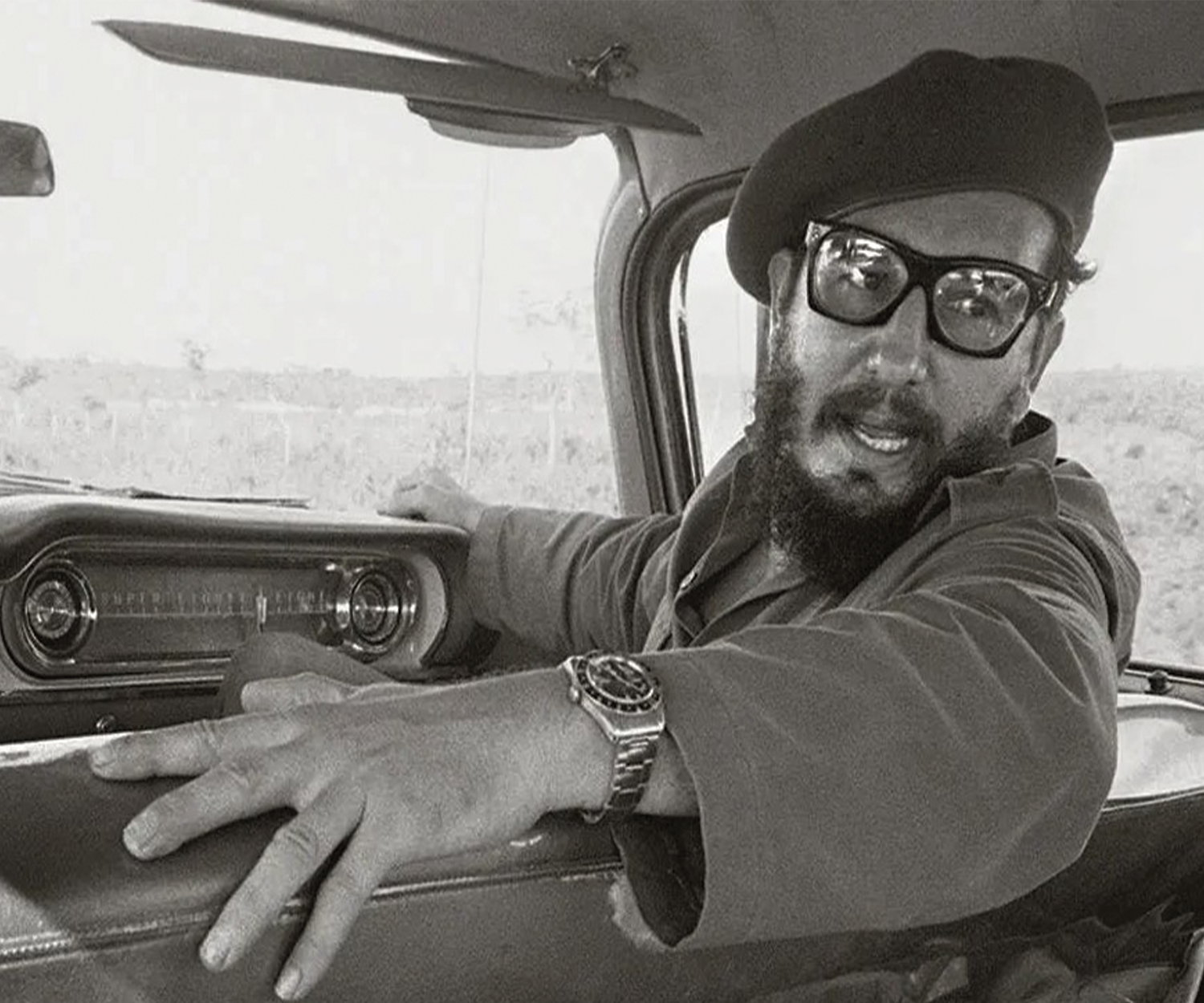
In Watches and in Espionage, Context Matters
By Cole Pennington I spent four years writing about watches professionally as an editor at Hodinkee, the leading publication in the world of horology. I...
Read OnBy Cole Pennington I spent four years writing about watches professionally as an editor at Hodinkee, the leading publication in the world of horology. I focused my writing mainly on tool watches, meaning watches that were engineered and used for a specific function, oftentimes by members of the military, scientists, explorers, or other professionals that didn’t treat their watch as a decorative piece of jewelry. The stories that kept me up for days at a time researching and writing focused on watches that played a small but important role in shaping history. For example, the Rolex Oyster Datejust that Civil Air Transport pilot Norman Schwartz was wearing when his C-47 was shot down during a 1952 CIA covert operation in Jilin Province, China. Or the WWII-era Active Service watch that Lt. Alex C. Jones wore aboard the HMCS Oakville that eventually returned home to a museum in Canada, over half a century later. I was lucky to explore stories like these, any many more. But there were so many stories that I didn’t have the opportunity to dig into, simply because of the fact that their very nature was deemed far too controversial for mainstream consumption. I had to turn down dozens of pitches and kill my own ideas that I thought were fascinating, but were unfit for the larger world of watch enthusiasm. These stories never found a place to land – until now. (Photo Credit: Cole Pennington/Hodinkee) I connected with Watches of Espionage a year and a half ago over a shared appreciation for watches that had fascinating stories to tell, long before it grew into a well-known platform in both the world of watch nerdery and intelligence/Special Operations. It’s been a long time in the making, but I’ve finally found a space to tell those stories, right here at W.O.E. What’s the story behind the Omega Constellation that North Korean founder Kim Il-sung commissioned for his most senior officials? What happened to the infamous Rolex GMT-Master once worn by Marxist revolutionary Che Guevara? Or Fidel Castro’s Rolex collection? What does the “Blackwater Breitling” represent? “Blackwater Breitling” - W.O.E. Personal Collection (Photo Credit: James Rupley) As the Dispatch takes on a life of its own, we’ll answer those questions. But first, it’s important to turn the lens on ourselves, the readership of this newsletter, and look at how we can best approach controversial watches and the stories connected to them. Mainstream watch media often shies away from controversial watches because undoubtedly someone will be offended by the discussion of the watch in question. But by doing that we deprive ourselves of the opportunity to educate ourselves. When it comes to war, conflict, espionage, and geopolitical affairs, it’s always murky. Sometimes there isn’t an obvious “right” answer immediately. We’re very quick to judge without knowing all the facts. There’s a haze of mystery around watches connected to this world. But through scholarship and a nuanced approach, we can cut through that haze and get to the truth. That’s part of the mission of WOE. Sometimes history, and further, horological history, is ugly. A number of respected Swiss (and German) watch brands produced watches for the Nazi forces during the dark days of WWII. There’s nothing glorious about watches serving as a cog in a war machine meant to obliterate the societal ideals we hold dear. But some watches take some time to work through; it’s important to understand the context surrounding them. For example, the series of Elgin watches ordered by The Russian War Relief in 1941 and delivered to Soviet troops to aid in the fight against the Nazi forces. From the story I wrote in 2019: The watches are inscribed with an encouraging note to Soviet soldiers: "To the Heroic People of the USSR – Russian War Relief USA,” with the latter half of the inscription being a transliteration into Cyrillic characters from English. There was a healthy amount of skepticism from the Western Allies towards the Stalin-led Soviet Union at the time, but the need to work together became obvious as Hitler’s Germany grew more powerful. American policymakers handled Soviet cooperation with a sort of "the enemy of my enemy is my friend" approach. It wasn’t necessarily an alliance formed from shared values, brotherhood, or kinship, but rather it was an alliance born out of sheer necessity. The only way to stop Germany was to band together. Winston Churchill shared the sentiment with typical English wit: "If Hitler invaded Hell, I would make at least a favorable reference to the Devil in the House of Commons." The war ended with the defeat of the Nazis, and the Russian War Relief dissolved as America entered peacetime. Pins, posters, and records at the New York Public Library are all that's left of the organization, but every now and then a confusing watch pops up from an American watchmaker with Cyrillic writing on the back. The relationship that developed between Russia and America in the post-war years is another chapter in history entirely, but the watch serves as a reminder of the time our nations came together to fight a greater evil. The Russian War Relief gave the Soviet soldiers a vital timekeeping tool for warfare; the Soviet soldiers gave all they could in the fight against the Nazis. Right now Russian forces are carrying out a hostile and bloody invasion on neighboring Ukraine under the autocratic Putin regime, flying in the face of international diplomacy and leaving thousands dead and a number of cities in ruins. Even Switzerland, with its age-old neutrality, was challenged by these actions. With the war in Ukraine raging, the Elgin I wrote about in 2019 can be seen in a different light – but it shouldn't. Context is important when we think through watches with a contentious past. We must set aside our biases and look at watches through the lens of history. Looking at watches with a complicated history requires ruthless objectivity, that’s the only way to cut through the discomfort of looking at topics and periods of history which don’t represent humanity at its best. By doing this, it allows us to produce scholarship around watches that we would normally write off as simply unacceptable. Che Guevara smoking a cigar with his infamous Rolex GMT Master Ref. 1675 (Photo Credit: Unknown) At W.O.E., we don’t shy away from hard truths. Many see watches in the context of a modern luxury status symbol, but watches can also serve as historical objects that challenge social narratives. As an editor at Hodinkee, when I first contacted W.O.E. to write about the role of the wristwatch in the world of intelligence, he debunked a lot of the common notions created by the likes of James Bond and instead revealed that watches are often used as gifts to build relationships in the modern world of intelligence operations. As early as WWI “trench watches” were used as a bargaining chip for a soldier's release. Some even had a gold insert set into the caseback that could be removed and traded for freedom. These watches are fascinating. I’ve written about their unlikely beauty at length. WWI Era “Trench Watches” (Photo Credit: Cole Pennington/Hodinkee) But the timepieces were made for a singular purpose, to provide Allied soldiers with an advantage on the battlefield. They increased their lethal capabilities. And that’s why it’s important to consider context when looking at watches. They can teach us about design, history, and most importantly, ourselves. Read Next: Man O'War And The Horological Symbols That Inspire Us
Read On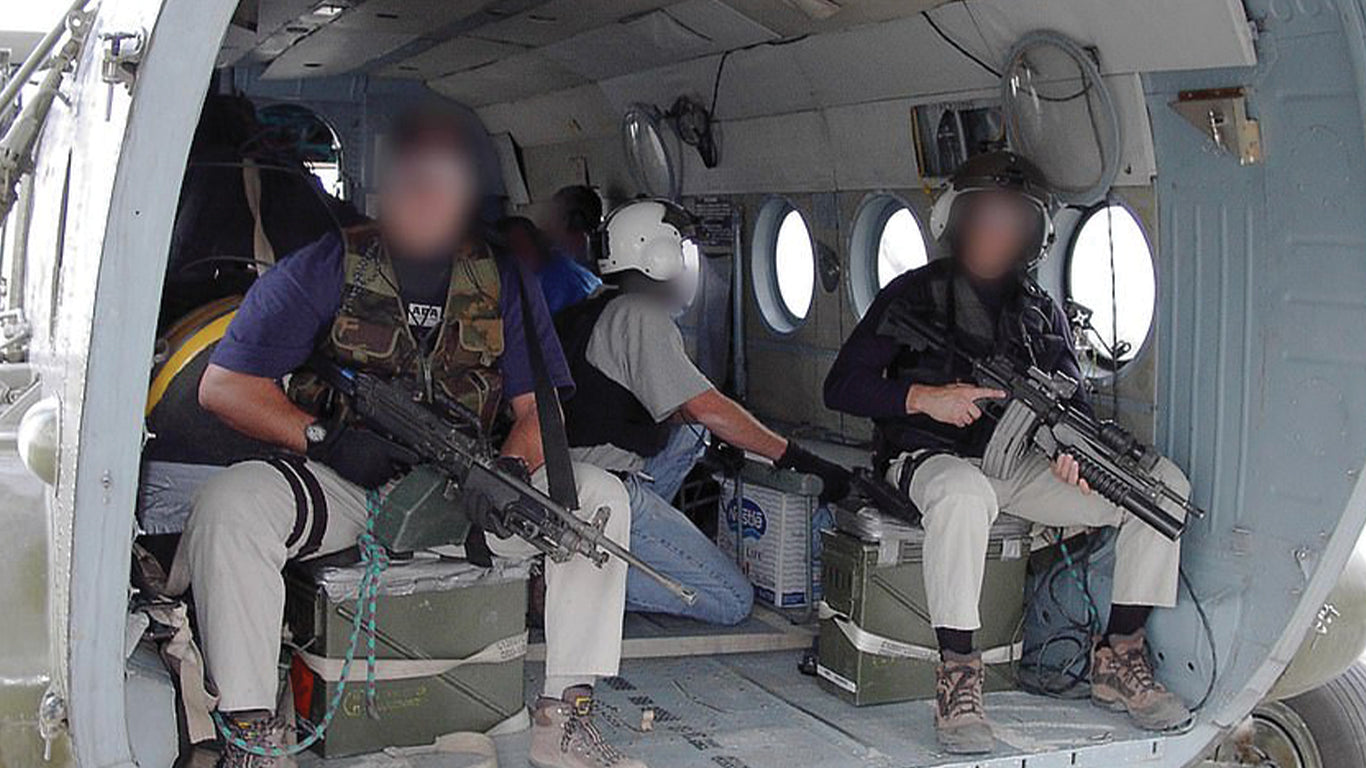
CIA’s JAWBREAKER Team and a Rolex Submariner
At the entrance of the CIA's Counterterrorism Mission Center (CTMC, formerly CTC) is a sign that reads, “Every day is September 12, 2001.” While most...
Read OnAt the entrance of the CIA's Counterterrorism Mission Center (CTMC, formerly CTC) is a sign that reads, “Every day is September 12, 2001.” While most of the country moved on from the horrific days immediately following September 11th, the men and women of CTMC continue to live this motto, serving quietly in the shadows to prevent another mass casualty event. One of these men was Gary Schroen, a legendary CIA Case Officer who led the initial Northern Alliance Liaison Team –codenamed JAWBREAKER– into Afghanistan in late 2001. When he returned from that historic assignment, he commemorated the accomplishment by purchasing a two tone Rolex Submariner with a brilliant blue dial. Schroen passed away in August at the age of 80, after a career at the CIA lasting five decades. Schroen’s widow, Anne McFadden, recalls that the Submariner was a constant presence on Schroen’s wrist, and now she keeps the watch on the dresser in her bedroom next to a picture of Schroen as a memento of her late husband. Rolex Submariner visible during Schroen’s 2005 appearance on NBCs Meet the Press. (Photo credit: NBC) After the attacks of September 11th 2001, Schroen, then 59 years-old, delayed his retirement to lead the team of CIA officers who were among the first on the ground in Afghanistan. Within 15 days of the attacks, Schroen and six other CIA officers linked up with the Northern Alliance in the Panjshir Valley. The JAWBREAKER team would establish the foundation for the swift defeat of the Taliban and deal a significant blow to al-Qaeda. As publicly documented by CIA, “by early December 2001–in less than three months–the Taliban regime had been overthrown, a significant number of the al-Qa’ida leadership had been killed or captured, and a major terrorist safe haven had been eliminated.” This was made possible by the heroic actions of Schroen and his team, and the decades of work in preparation for that pivotal moment. Schroen, realizing the historical significance of the operation, documented his experiences in the 2005 book, First In. According to a recent Washington Post article, Schroen also commemorated his successful mission against the Taliban by purchasing a Rolex Submariner. At the time, Schroen reportedly said, “I’ve always wanted a Rolex and I survived Afghanistan and I am buying one.” And so he did. Schroen’s widow, Anne McFadden, holding her husband's Rolex Submariner 16613. (Photo credit: Bill O’Leary, Washington Post) The watch is a Rolex Submariner 16613, nicknamed the “Bluesy” for the unique sunburst dial. Produced from 1988-2009, the reference showcases a striking blue dial and two-tone “Rolesor” bezel and bracelet. (Rolesor is Rolex’s term for two-tone gold and stainless steel.) The drilled lug holes match the purchase date of the early 2000s as Rolex phased out drilled lugs shortly after. Despite the Hollywood depiction, even legendary CIA officers are normal people. Like the real estate agent who commemorates his accomplishment as “salesman of the year” with a new watch, CIA officers are no different. In fact, at CIA, there is even an informal name for this, the so-called “war zone watch.” W.O.E. wrote about this in a Hodinkee article, after returning from Iraq, Afghanistan, or one of the undeclared expeditionary locations, many officers take a portion of their savings and purchase a watch to discreetly commemorate the accomplishment. The Submariner reference 16613 with the blue dial is an interesting choice by Schroen; I've generally viewed this reference as flashier than the subtle black Submariner. Having crossed paths with Gary several times throughout my career, he was a humble guy. He could easily be mistaken for an accountant, small business owner or stay-at-home dad if you met him at a neighborhood bar-b-que. He was not flashy, and this watch appears at odds with his more traditional demeanor and quiet professional ethos. But as true watch connoisseurs know, a watch is (or should be) a deeply personal choice. It is something one buys for oneself and not for others. We can only speculate on his reasons for purchasing that specific reference, but something about the gold and blue dial clearly spoke to Schroen. This story underscores the notion that seemingly insignificant tools are a part of our identity when we are alive and our legacy when we pass. Sure, It is easy to say, “it's just a watch,” but to McFadden, it’s so much more. Like Todd Beamer’s Rolex found in the rubble of Flight 93, the Submariner is a permanent piece of her husband, a memento she will cherish and a symbol of both his service and the CIA’s response to 9/11. CIA Medals earned by Gary Schroen. (Photo credit: Bill O’Leary, Washington Post) In a rare statement by CIA Director William J. Burns, the CIA honored Schroen’s service to the nation, calling him “a legend and inspiration to every Agency officer. . . . Gary embodied the very best of our organization. We will never forget his unwavering dedication, loyalty, and perseverance to protect and defend our country.” In fact, Gary was one of the few officers I am aware of that was able to write a book and still maintain his credibility within the CIA. In our world, that’s a rare occurrence. Gary, thank you for everything you have done for our nation, you have made your mark on the history of the United States and we are forever in your debt. Read Next: The Lasting Legacy Of The CIA’s Lockheed A-12 And The Watch That Served It This newsletter has been reviewed by the CIA’s Prepublication Classification Review Board to prevent the disclosure of classified information. Bonus: Mi-17 Helicopter Clock, used to insert the initial 7 member CIA Team in Afghanistan. Currently at the CIA museum in Langley, VA. CIA Museum Poster commemorating Jawbreaker Team. “Because of the relationship the CIA had developed with the Northern Alliance in the years leading up to the September attacks, the Agency was in a strong position to be first on the ground in Afghanistan. The CIA proposed a plan to send seven highly trained officers into the field to renew relationships with Afghan partners and collect real-time, actionable intelligence. By Sept. 26, 2001, just 15 days after the attacks on U.S. soil, the Northern Alliance Liaison Team-codenamed "JAWBREAKER"-was on the ground and operating in Afghanistan.”
Read On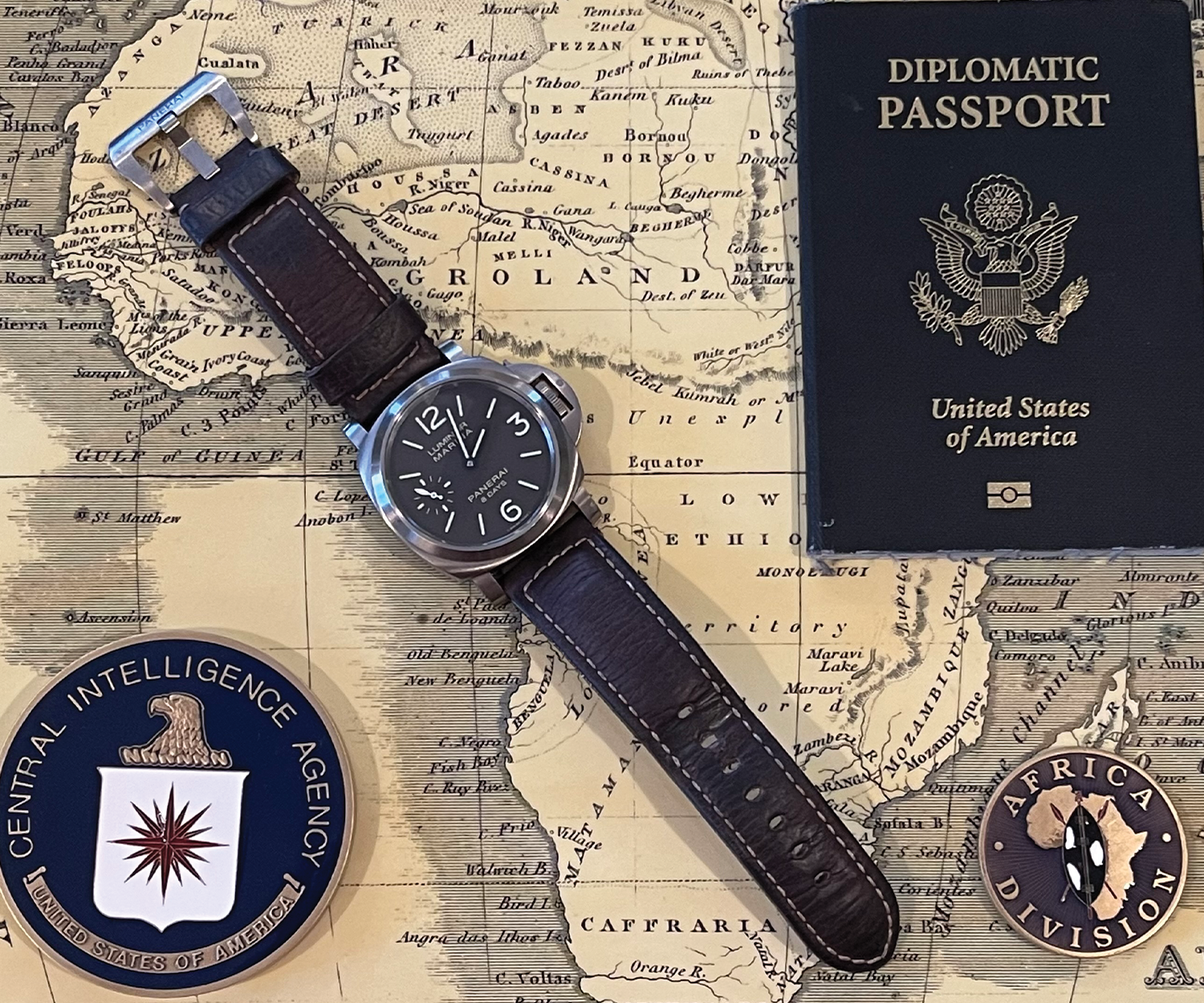
CIA Case Officer Reveals The Connection Between Watches and Espionage
A Former CIA Case Officer Reveals The Surprising Connection Between Watches and Espionage Luxury timepieces play a significant role in the murky world of spycraft...
Read OnA Former CIA Case Officer Reveals The Surprising Connection Between Watches and Espionage Luxury timepieces play a significant role in the murky world of spycraft – just not the way they're portrayed in Hollywood. (Originally featured in Hodinkee.)
Read On